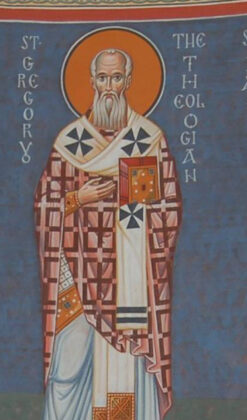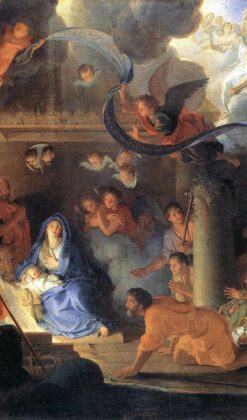Mary Magdalene is one of the most well-known and yet misunderstood women in the Bible. She’s commonly portrayed in Christian art as a forgiven prostitute, or, in an extreme case, she’s thought to be Jesus’ wife—the “holy grail”—according to Dan Brown’s DaVinci Code. Neither of these depictions bears a shred of biblical evidence. The Bible never says she was a prostitute, and neither does it suggest she was Jesus’ wife. The only thing we know about Mary is that she was probably from the small fishing village of Magdala, and that she was once possessed by 7 demons (Luke 8:2).
7 demons. That’s a lot of horror. The number 7 may be literal, but it also may be symbolic, referring to completeness, as the number 7 often does. This would mean that she was totally ruled by demons. And so she probably not only looked insane, but would have been a well-known social stigma in her small town of Magdala. People would have looked at her with horror, disdain, and disgust. It’s likely that she had no friends, certainly no husband or any man who would take the slightest interest in her. Society not only rejected her, but was repulsed by her. She probably had to beg for money—if anyone would come close enough to drop a shekel in her cup.
Mary Magdala was the epitome of social rejection.
The closest type of person in our culture would be a toothless bag lady, who walks down the street muttering and arguing with herself. If you look at her, she cusses at you. Keep looking, and maybe she’ll throw a rock at you. That’s Mary Magdalene. Now, imagine the joy that flooded Mary’s heart when Jesus not only delivered her from her demonic oppression, but delighted in her and valued her enough to say: “Come follow me, I need you to help set up God’s kingdom on earth.”
Put yourself in her shoes. Imagine that everyone you know despises you. They actually think that you smell horrible, that your clothes are repulsive, and that you have nothing to offer. Why are you still here? Why don’t you just curl up and die? they think. Now imagine that this is your life—forever. For as long as you know, you have not had a life. Your mother and father have abandoned you. Your brothers and sisters have disowned you. You’ve heard the word “friendship,” but you’ve never known what it meant. You’ve seen people make a strange delightful sound called laughter, but you’ve never laughed. Every now and then a stranger approaches you, but just when you think they’re going to talk to you, they kick dust in your direction, spit on you, and walk away.
And then, a young Jewish rabbi walks up, surrounded by a bunch of men, and you think you’re done for. How many wads of phlegm will cover my face before they kick me, beat me, and, perhaps even stone me to death? But instead of death, the rabbi offers a tender hand and gently raises you up from the ground and sternly commands the demons to leave you.
“This woman is mine! I have bought her. I delight in her. And you have no business here any more—Mary is my disciple. And I need her to help further my kingdom. Be gone!”
Immediately, heaven comes crashing down to earth and Mary breathes for the first time the breath of life! Not only does she now know what friendship means; she now knows what it means to be human. And now she can laugh.
More than all the other disciples, Mary Magdalene would remain singularly committed to Jesus. We see this especially at the end of Jesus’ life. On the night Jesus was betrayed, his disciples saw that things were taking a turn for the worse and many of them scattered. Judas betrayed him. Peter, his right hand man, denied him three times. And many others were no-where to be found.
But Mary. Mary Magdalene. She can’t leave Jesus. Where would she go? Who else would sustain her stunning breath of life? So in the gospels, it’s Mary Magdalene who stands firm beneath the cross (Matt 27:56). It’s Mary who follows the guards to the tomb (Matt 27:61). And it was Mary who raced to the grave that Sunday morning to be with her Savoir, only to find him risen from the dead (Luke 24:10). When Jesus broke the chains of death and conquered the power of Satan, it was Mary who was the first one to bask in the glory of the risen King.
Mary is a beautiful illustration of God’s value for social outcasts. In the first century, women (for the most part) were viewed as inherently inferior to men (see my previous post). But not Jesus. He reconfirmed that truth that’s rooted in Genesis 1, that God equally values women: all humanity was created in God’s image and therefore they are the pinnacle of God’s creation. And when Jesus came to earth, his mission was not only to save us and forgive our sins (though that was a big part), but also to grab hold of women and declare them to be beautiful, precious, and infinitely worthy in God’s sight. A radical message for then; an under-appreciated and ignored message today.
Any male chauvinism that lives on in the church today is an offense to God and works against the work of Christ.











